Disclosure: This article contains affiliate links. We may earn a commission from purchases at no extra cost to you, which helps our travel content.
The first time I stepped off the train at Shibuya Station, I felt like I'd been tossed into a human-sized pot of boiling water—chaotic, overwhelming, but somehow exhilarating. That's Tokyo for you—a city that simmers with contrasts, where ancient temples stand in the shadows of neon-lit skyscrapers and where you can find both the most refined kaiseki meal and the most comforting bowl of ramen within blocks of each other. As a chef who's spent years exploring the culinary corners of the world, I've returned to Tokyo more times than I can count, each visit peeling back another layer of this magnificent onion of a city. What I've learned is that Tokyo isn't just one place—it's dozens of micro-cities, each neighborhood with its own distinct flavor profile. This guide is my attempt to break down this complex metropolis into digestible bites, perfect for first-timers looking to spend two incredible weeks absorbing everything Japan's capital has to offer this spring.
Shinjuku: The Heartbeat of Modern Tokyo
If Tokyo were a meal, Shinjuku would be the umami-packed main course—intense, satisfying, and impossible to forget. This district is essentially Tokyo's central nervous system, pulsing with energy 24/7 and home to the world's busiest train station that somehow moves 3.5 million people daily with clockwork precision.
My first night in Shinjuku remains etched in my memory: stepping out from the labyrinthine station into a canyon of neon and LED, I was immediately swept up in the current of salarymen and fashionable youth. The sensory overload is part of the experience—embrace it rather than fight it.
By day, explore the serene Shinjuku Gyoen National Garden, an oasis of calm where I've spent countless hours sketching new recipe ideas under cherry blossoms. The 200 yen entrance fee is perhaps the best value in Tokyo. When hunger strikes, head to Memory Lane (Omoide Yokocho), affectionately known as 'Piss Alley' (charming, I know). This narrow network of alleyways houses dozens of tiny yakitori joints and izakayas where you'll be shoulder-to-shoulder with locals. My favorite spot, Albatross, seats just eight people and serves the most perfect grilled chicken hearts you'll ever taste.
As night falls, the eastern side transforms into Kabukicho, Tokyo's infamous red-light district. While it has a reputation, it's generally safe for curious travelers—just keep your wits about you. For an unforgettable view, ride the elevator to the free observation deck of the Tokyo Metropolitan Government Building, where on clear days you might spot Mt. Fuji in the distance.
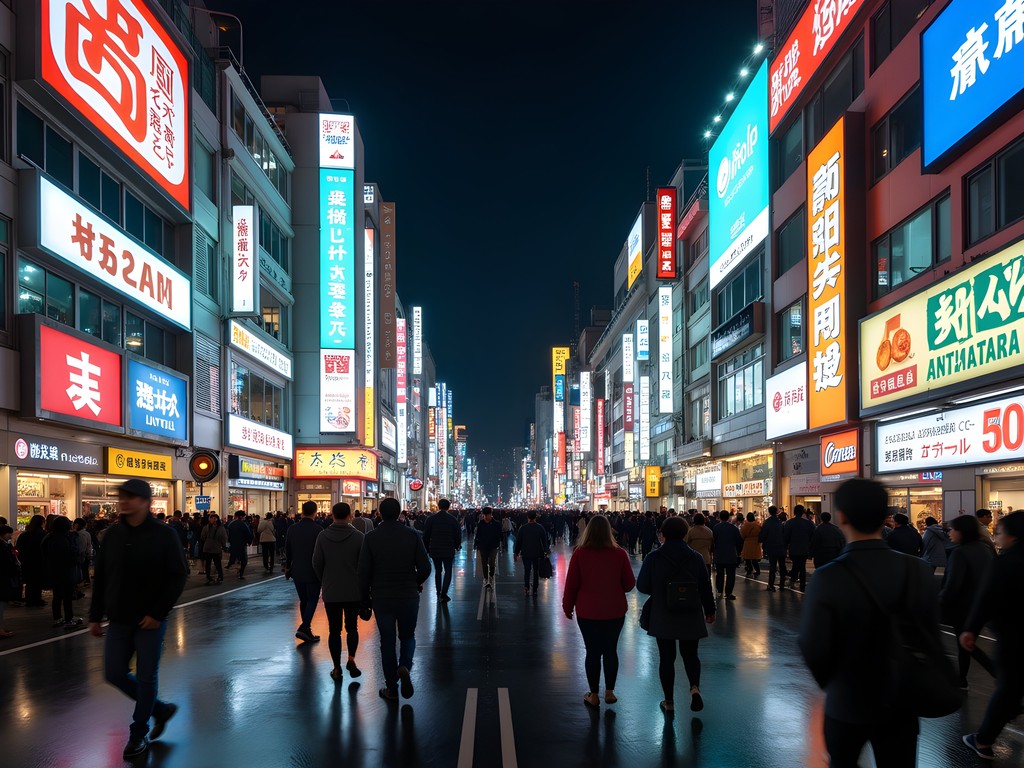
💡 Pro Tips
- Visit Shinjuku Gyoen early morning on weekdays to avoid crowds and enjoy morning light for photography
- Use the lesser-known New South Exit at Shinjuku Station to avoid the worst congestion
- Book the Robot Restaurant show at least two days in advance—it's touristy but genuinely mind-blowing
Tsukiji & Toyosu: A Chef's Paradise
While the historic inner market of Tsukiji relocated to Toyosu in 2018, the outer market remains my culinary Mecca in Tokyo. As a chef, I've made pilgrimages here at dawn to witness the symphony of commerce that feeds this massive city. Even with the tuna auctions moved to the new Toyosu Market, the original Tsukiji Outer Market still thrives as a food lover's paradise.
Start your morning with what I consider a religious experience: a sushi breakfast at one of the small counters surrounding the market. Yes, raw fish at 7am might seem strange to the uninitiated, but when in Tokyo... My recommendation is to bring a good travel water bottle filled with green tea to cleanse your palate between bites of the freshest seafood you'll ever taste.
Wander the narrow alleys of knife sellers, where I spent an embarrassing amount of yen on a hand-forged yanagiba knife that required its own checked luggage on the flight home. The craftsmanship here is unparalleled—even if you're not in the market for professional cutlery, watching the artisans at work is worth your time.
For the complete experience, take the short train ride to the new Toyosu Market. The viewing platforms lack the gritty charm of old Tsukiji, but the tuna auctions remain spectacular. Pro tip: book your observation deck spot online well in advance, as same-day tickets are nearly impossible to secure during spring season.
Between the two markets, stop at Turret Coffee, a tiny shop serving some of Tokyo's best pour-overs in a space decorated with old market turret trucks. Their house blend paired with a tamagoyaki (sweet Japanese omelet) from a nearby stall creates a perfect mid-morning break.
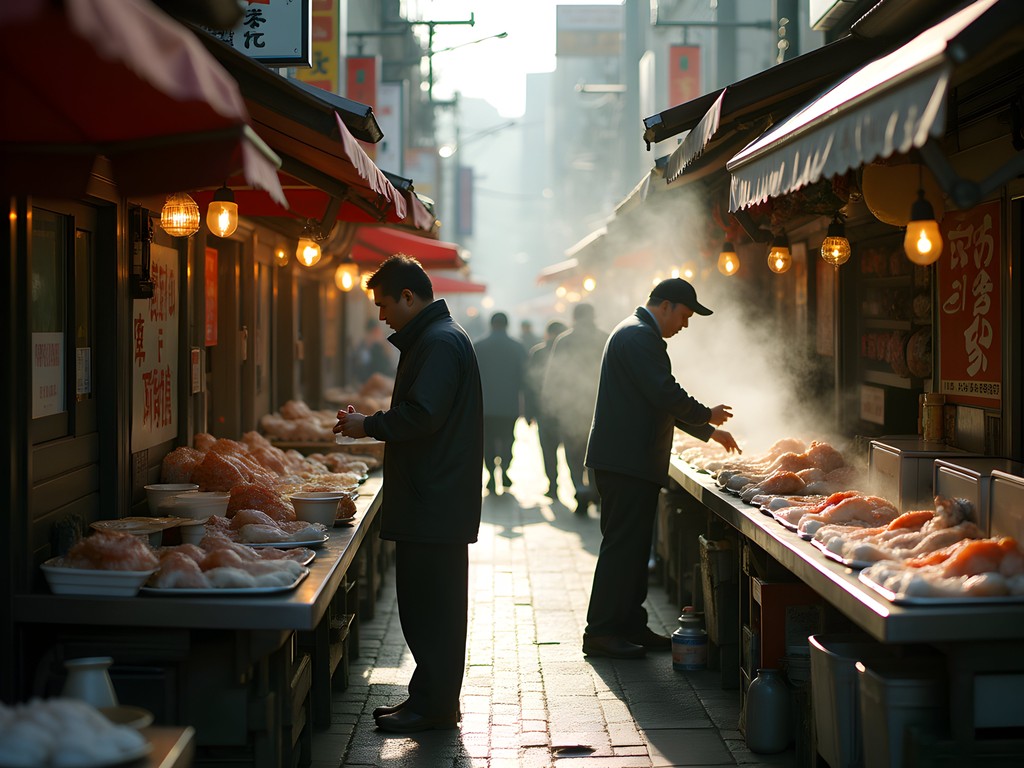
💡 Pro Tips
- Arrive at Tsukiji Outer Market by 8am to avoid tourist crowds and see vendors setting up
- Bring cash—many small vendors don't accept cards
- Learn the phrase 'Osusume wa nan desu ka?' (What do you recommend?) to get the vendor's best offerings
Shimokitazawa: Tokyo's Bohemian Enclave
Just a short train ride from Shibuya lies Shimokitazawa (affectionately called 'Shimokita' by locals), a neighborhood that feels like it exists in a parallel universe to the high-gloss districts of central Tokyo. This is where I go when I need a break from the intensity—a place where the pace slows and creativity flourishes.
Shimokita is Tokyo's answer to Brooklyn or Shoreditch—a maze of narrow pedestrian streets lined with vintage clothing shops, record stores spinning vinyl, and independent cafes where baristas treat coffee preparation like a sacred art. The architecture here is refreshingly low-rise and human-scaled, creating an intimate atmosphere that encourages exploration.
My typical day in Shimokita starts with breakfast at Flipper's, where their soufflé pancakes defy gravity and melt in your mouth. Then I spend hours thumbing through used books at B&B (Book & Beer), where they brilliantly combined two of life's greatest pleasures. For lunch, follow the locals to one of the many curry shops—Rojiura Curry SAMURAI serves a Hokkaido-style soup curry that warms you from the inside out.
As evening approaches, Shimokita truly comes alive. The neighborhood houses some of Tokyo's best small theaters and live music venues. Before a show, I always stop by Trouble Peach for craft beer or EN Tea House for something stronger. After midnight, tiny bars like Bar Flower and Mother open their doors, where you might find yourself in deep conversation with local artists and musicians.
For photographers, bring your mirrorless camera with a prime lens—the intimate streets and quirky storefronts offer endless compositional possibilities. I've filled countless memory cards capturing Shimokita's unique aesthetic, especially during golden hour when the low sunlight filters through the narrow streets.
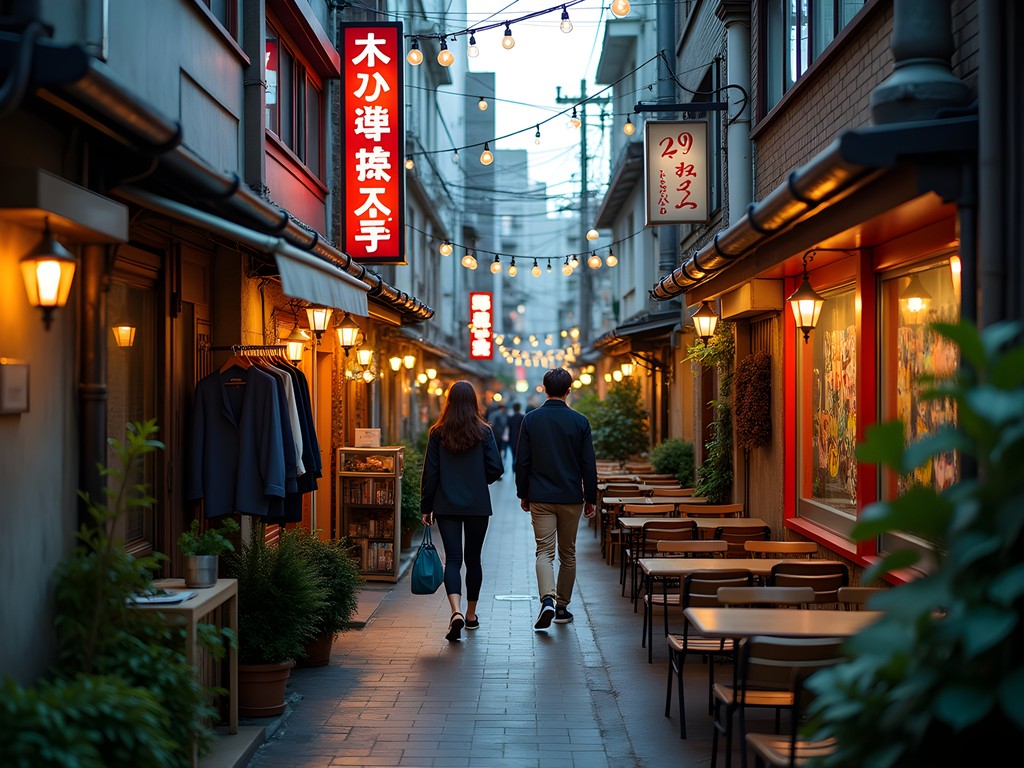
💡 Pro Tips
- Visit on weekdays to avoid weekend crowds when Tokyoites flock here
- Most vintage shops offer tax-free shopping for tourists—just bring your passport
- Look for small alleyway shrines between shops—these hidden spiritual spots are easily missed
Asakusa & Ueno: Traditional Tokyo
When the neon and newness of Tokyo becomes overwhelming, I retreat to Asakusa—a district that feels like stepping back in time. Centered around the magnificent Sensō-ji Temple, this area preserves the atmosphere of old Edo (Tokyo's former name) better than anywhere else in the city.
Start your exploration at Kaminarimon (Thunder Gate), with its massive red lantern marking the entrance to Nakamise-dori, a shopping street that's been serving pilgrims and tourists for centuries. Yes, it's touristy, but the traditional snacks and crafts sold here maintain authentic quality. I always pick up freshly-made ningyo-yaki (little cakes filled with sweet red bean paste) to fuel my temple wanderings.
Time your visit to Sensō-ji for early morning (before 8am) or evening (after 6pm) to avoid the worst crowds. The temple grounds take on a magical quality when the tour buses depart, allowing you to appreciate the incense smoke curling around ancient eaves and the gentle sound of prayer papers rustling in the breeze.
Just north of Asakusa lies Ueno, home to Tokyo's most expansive public park and several world-class museums. During cherry blossom season, Ueno Park becomes the epicenter of hanami (blossom viewing) parties, with thousands of blue tarps spread under pink canopies. Even without the blossoms, the park offers a welcome green respite and houses the excellent Tokyo National Museum—where I've spent rainy days marveling at samurai armor and delicate pottery.
For dinner, explore the network of yokocho (alleyways) around Ueno Station, where tiny restaurants serve specialties from across Japan. Bring a good travel guidebook with Japanese phrases—many of these establishments have no English menus, but the owners appreciate any attempt at Japanese and will often guide you to their best dishes with enthusiastic gestures.
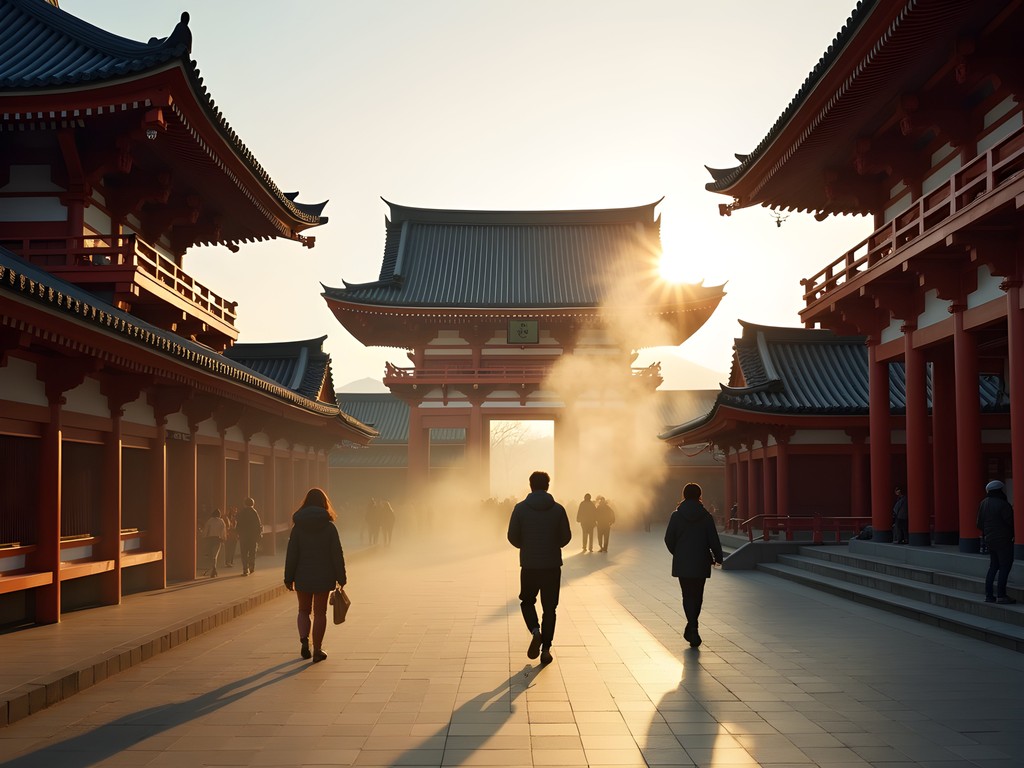
💡 Pro Tips
- Purchase a combined ticket for multiple Ueno museums to save money
- Try the local specialty 'monja-yaki' at a small restaurant on Hoppy Street near Asakusa
- Visit Kappabashi 'Kitchen Town' between Asakusa and Ueno for professional cooking supplies and the famous plastic food displays
Harajuku & Omotesando: Tokyo's Style Central
If you've ever wondered where Tokyo gets its reputation for cutting-edge fashion and youth culture, look no further than Harajuku. This district has been the incubator for Japan's most outrageous style movements for decades, though these days it's increasingly commercialized. Still, pockets of genuine creativity persist if you know where to look.
Takeshita Street remains the heart of teenage Harajuku—a narrow pedestrian thoroughfare packed with crepe stands, purikura photo booths, and shops selling everything from Gothic Lolita accessories to rainbow-colored wigs. It's sensory overload in the best possible way, though I recommend visiting on weekday mornings when you can actually move without being swept along by the crowd.
For a more sophisticated shopping experience, head to adjacent Omotesando, often called 'Tokyo's Champs-Élysées.' Here, avant-garde architecture houses flagship stores for international luxury brands. Even if your budget doesn't stretch to Prada or Dior, the buildings themselves are worth admiring—particularly the Tokyu Plaza entrance with its kaleidoscopic mirrored escalators.
Food-wise, Harajuku specializes in photogenic treats that dominate Instagram feeds. While the rainbow cotton candy and animal-shaped crepes are fun for photos, save your appetite for the backstreets. Cat Street, running parallel to Omotesando, houses excellent cafes like The Roastery by Nozy Coffee, where I've spent many afternoons people-watching while sampling single-origin pour-overs.
No visit to this area is complete without exploring Yoyogi Park on Sunday, when rockabilly dancers gather near the entrance and various subcultures claim their territories across the grounds. Pack a picnic blanket and join the locals for an afternoon of relaxation and prime people-watching—you'll see everything from cosplayers to traditional wedding parties heading to Meiji Shrine within the park.

💡 Pro Tips
- Visit Takeshita Street before noon on weekdays to avoid the crushing crowds
- Check out design shops like TOKYO CULTUART by BEAMS for unique, Japan-only items
- For the best views of Harajuku style, grab a window seat at the Starbucks overlooking the Takeshita Street entrance
Day Trips: Escaping the Urban Sprawl
Even with Tokyo's endless fascinations, sometimes you need to escape the concrete jungle. Fortunately, Japan's excellent rail network makes day trips from the capital both easy and rewarding. These excursions provide the perfect palate cleanser during your two-week stay.
Kamakura, just an hour south of Tokyo, feels worlds away from the metropolis. Often called 'Little Kyoto,' this coastal town was Japan's medieval capital and retains numerous temples set against lush, forested hills. The bronze Great Buddha (Daibutsu) sits serenely under open skies, having survived tsunamis and earthquakes since the 13th century. After temple-hopping, follow the Daibutsu hiking trail through bamboo groves to reach Hase-dera Temple, with its spectacular views over Sagami Bay.
For nature lovers, Hakone offers onsen (hot spring) bathing and possible views of Mount Fuji across Lake Ashi. The Hakone Free Pass provides excellent value, covering the scenic railway, funicular, ropeway, and pirate ship (yes, really) that form a loop around this volcanic region. Pack your hiking boots if you plan to explore the numerous trails—the terrain can be challenging but rewards with spectacular views.
My personal favorite day trip is to Nikko, two hours north of Tokyo. This UNESCO World Heritage site houses the ornately decorated Toshogu Shrine, final resting place of Tokugawa Ieyasu, the shogun who unified Japan. The shrine complex's intricate wood carvings include the famous 'see no evil, speak no evil, hear no evil' monkeys and the sleeping cat that supposedly comes alive at night to protect the shrine. Beyond the main attractions, follow the mountain road to discover sacred bridges, waterfalls, and the tranquil shores of Lake Chuzenji.
Whichever day trip you choose, aim to return to Tokyo in time for dinner—part of the joy is contrasting these historical sites with the modernity awaiting you back in the capital. The cultural whiplash is part of what makes traveling in Japan so fascinating.

💡 Pro Tips
- Purchase day trip train tickets and passes from the JR ticket office rather than machines for easier navigation
- For Hakone, start early and travel counter-clockwise around the circuit to avoid the worst crowds
- In Kamakura, rent electric bicycles to cover more ground—the town is more spread out than it appears on maps
Final Thoughts
Tokyo is less a single city and more a collection of villages, each with its own distinct flavor profile and texture. Like the most complex kaiseki meal, it reveals itself gradually, course by course, neighborhood by neighborhood. My advice? Don't try to see everything—it's simply impossible. Instead, choose a few districts that resonate with your interests and explore them deeply. Wander the backstreets, sit in local cafes, and allow yourself to get pleasantly lost. The Tokyo you'll discover this way—the one that exists beyond the guidebook highlights—is the one that will stay with you long after you've returned home. Whether you're slurping ramen in a steamy shop under the train tracks or watching sunset paint Shinjuku's skyscrapers in gold, Tokyo rewards those who approach it with curiosity and patience. So pack your sense of adventure, bring your appetite (both culinary and cultural), and prepare for a two-week journey through one of the world's most fascinating urban landscapes. The city awaits—itadakimasu!
✨ Key Takeaways
- Tokyo is best explored by neighborhood rather than trying to see everything
- Spring offers ideal weather and cherry blossoms, but prepare for crowds at major attractions
- Early mornings provide the best opportunity to experience popular sites without overwhelming crowds
- Food is an essential lens through which to understand Tokyo's culture—budget accordingly for culinary adventures
📋 Practical Information
Best Time to Visit
Late March to early April for cherry blossoms, or November for autumn colors
Budget Estimate
¥15,000-25,000 per day (approximately $100-175 USD) excluding accommodation
Recommended Duration
Minimum 5 days, ideally 10-14 days
Difficulty Level
Beginner
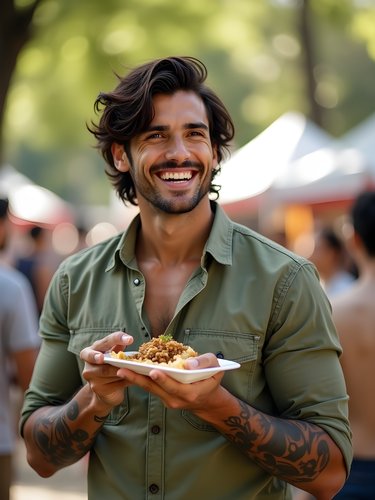
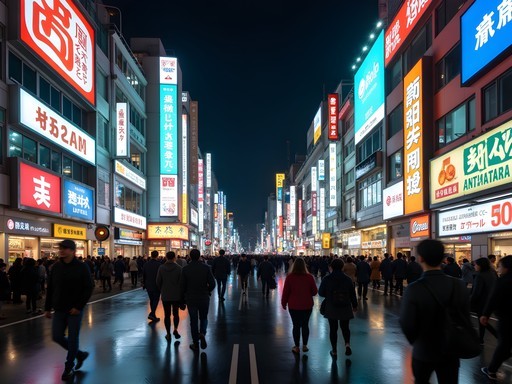
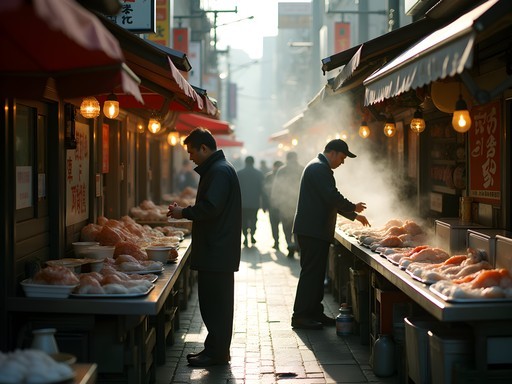














Comments
winternomad
Love this breakdown! What's the best area to stay for someone who wants quiet nights but easy access to the main sights?
summerstar7748
Is Tsukiji still worth visiting even though the main market moved to Toyosu? Planning my food adventures!
wanderlustzone
Absolutely! The outer market at Tsukiji is still there and amazing. Great street food and kitchen supplies. Toyosu is more organized but less atmospheric. Do both if you can!
Frank Garcia
Brilliant breakdown of Tokyo's districts, Marco. I spent 3 weeks there last year and found the neighborhood divisions really fascinating. One thing I'd add about Shinjuku - the contrast between the neon-lit eastern side and the government buildings in the west is striking. The Metropolitan Government Building has free observation decks that rival Tokyo Skytree, but without the entry fee. Also, for budget travelers, the hostels in Asakusa offer incredible value and that morning view of Sensō-ji before the crowds arrive is worth the early alarm. I used this guidebook which had some excellent walking routes connecting these neighborhoods.
summerstar7748
Thanks for the tip about the Metropolitan Government Building! Adding it to my list!
wanderlustzone
Just got back from Tokyo last month and this guide would have been SO helpful! Shimokitazawa was my absolute favorite neighborhood - spent hours digging through vintage shops and found an amazing jazz bar down some tiny alley. Didn't even need Google Maps after a while, just wandered and discovered. The coffee scene there is incredible too.
mountainwanderer
Going to Tokyo for the first time next month! Is Shinjuku really as overwhelming as everyone says? Trying to decide where to book my hotel.
Casey Andersson
Shinjuku is intense but incredibly convenient! I stayed at the Park Hyatt (yes, from Lost in Translation fame) and found it to be the perfect retreat after busy days. The station area is chaotic but walk 10 minutes in any direction and you'll find quieter pockets. For a first-timer, I'd say it's actually ideal - great transport links to everywhere else.
mountainwanderer
Thanks Casey! That's really helpful. Maybe I'll brave it then!
SakuraBlossom
Just got back from Tokyo and used this guide extensively! Your Asakusa section was particularly helpful. We stayed at a traditional ryokan near Sensoji and it was magical walking around early morning before the crowds. One thing I'd add - if you're visiting Tsukiji Outer Market, go HUNGRY and be prepared to eat your way through. The tamagoyaki (sweet egg omelette) stands are worth the lines. Also, we found the best ramen of our trip in a tiny shop in Shimokitazawa with only 8 seats. Sometimes the unplanned discoveries are the best!
RamenHunter
Do you remember the name of that ramen shop in Shimokitazawa? Going next month!
SakuraBlossom
It was called Ramen Nagi! Small place with a vending machine for orders. Get the black garlic ramen!
JapanFanatic
Great guide! How many days would you recommend for a first timer to properly explore Tokyo?
smartguy
Not the author but I'm planning 7 days just for Tokyo based on this guide. Seems like each district deserves at least a day.
TokyoDreamer88
Love this! Your Shibuya description is spot on - felt exactly the same way my first time crossing that intersection!
Marco Flores
Great breakdown of the neighborhoods! I'd add that Shimokitazawa is absolutely magical for vintage shopping - spent way too much money there last year! One tip for first-timers: the transit system looks intimidating but it's actually super efficient. I downloaded Japan Travel by Navitime which saved me countless times with offline maps and train schedules. Also, don't miss Nakano Broadway if you're into anime or Japanese subcultures - it's like a condensed version of Akihabara without the crowds.
smartguy
Thanks for mentioning Nakano Broadway! Not in any of the guides I've read.
smartguy
This guide is exactly what I needed! Heading to Tokyo next month for the first time and was feeling overwhelmed by all the districts.
Marco Flores
You'll love it! I spent three weeks hopping between neighborhoods last year. If it's your first time, definitely spend at least two days in Shinjuku - it's sensory overload but in the best way possible!
smartguy
Thanks for the tip! Any specific spots in Shinjuku I shouldn't miss?
Marco Flores
Golden Gai for sure - tiny network of alleys with the smallest bars you've ever seen. Each one has like 5-8 seats max. Go early (around 7pm) before it gets packed with tourists. Also, the view from the Metropolitan Government Building is free and just as good as Tokyo Tower IMO.
Venture X
Premium card with 2X miles, $300 travel credit, Priority Pass